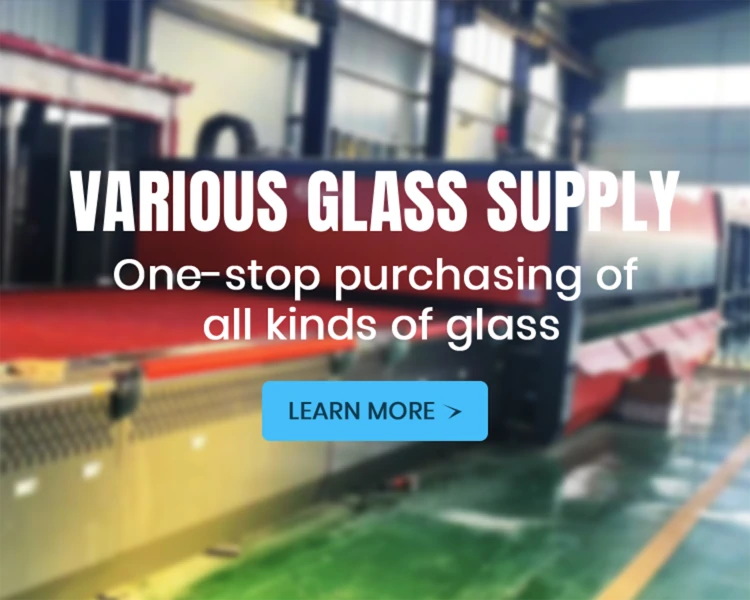The Difference Between Tempered Glass and Regular Glass
When it comes to choosing materials for construction, home décor, or various applications, understanding the properties of different types of glass is crucial. Two commonly discussed types are tempered glass and regular (or annealed) glass. While they may appear similar at first glance, the differences between them are significant in terms of strength, safety, and application.
What is Regular Glass?
Regular glass, also known as annealed glass, is the most common type of glass used in various applications. It is produced by heating glass to a high temperature and then slowly cooling it to relieve internal stresses. This process makes regular glass relatively easy to work with, allowing for straightforward cutting and shaping. However, it does not have the same level of strength or performance as tempered glass.
One of the main characteristics of regular glass is its susceptibility to breakage. When under stress or impact, it tends to shatter into sharp, jagged shards, which can be dangerous. This can be a significant risk in environments where safety is a priority, such as in glass doors or windows.
What is Tempered Glass?
Tempered glass, also referred to as toughened glass, is a type of safety glass that has been treated through a process of extreme heating and rapid cooling. This method increases the glass's strength significantly—sometimes up to five times stronger than regular glass of the same thickness. The tempering process creates a balance of internal and external stresses, making tempered glass more resistant to impact, temperature changes, and other forms of stress.
One of the standout features of tempered glass is how it reacts when broken. Unlike regular glass, when tempered glass shatters, it breaks into small, blunt pieces rather than sharp, dangerous shards. This characteristic greatly reduces the risk of injury, making tempered glass an ideal choice for applications where safety is paramount.
what's the difference between tempered glass and regular glass
Key Differences
1. Strength The most significant difference between tempered and regular glass is strength. Tempered glass can withstand greater force and pressure due to the manufacturing process, making it preferable in high-impact environments.
2. Safety In terms of safety, tempered glass is superior. Regular glass can create harmful shards when broken, while tempered glass breaks into small pieces, significantly reducing the risk of injury.
3. Thermal Resistance Tempered glass can endure temperature fluctuations better than regular glass. This makes it suitable for applications like oven doors or storefronts where exposure to heat or coming in contact with hot objects is common.
4. Cost The manufacturing process of tempered glass is more complex and thus more expensive than regular glass. While regular glass is cheaper upfront, the potential costs associated with safety hazards and breakage can make tempered glass a more economical choice in the long run.
5. Application Because of its safety and durability, tempered glass is commonly used in a wide variety of applications, such as shower doors, glass tables, car windows, and facades of buildings. Conversely, regular glass is often used in picture frames, inexpensive windows, and other applications where safety is less of a concern.
6. Cutting and Finishing Regular glass can be cut and processed after the annealing process. In contrast, tempered glass must be cut before the tempering process; any modifications post-tempering will result in breakage.
In summary, while tempered glass and regular glass may seem similar, their differences in strength, safety, and application make them suitable for different purposes. When making decisions about glass for a specific application, understanding these differences is essential for ensuring safety and effectiveness.
 Afrikaans
Afrikaans  Albanian
Albanian  Amharic
Amharic  Arabic
Arabic  Armenian
Armenian  Azerbaijani
Azerbaijani  Basque
Basque  Belarusian
Belarusian  Bengali
Bengali  Bosnian
Bosnian  Bulgarian
Bulgarian  Catalan
Catalan  Cebuano
Cebuano  Corsican
Corsican  Croatian
Croatian  Czech
Czech  Danish
Danish  Dutch
Dutch  English
English  Esperanto
Esperanto  Estonian
Estonian  Finnish
Finnish  French
French  Frisian
Frisian  Galician
Galician  Georgian
Georgian  German
German  Greek
Greek  Gujarati
Gujarati  Haitian Creole
Haitian Creole  hausa
hausa  hawaiian
hawaiian  Hebrew
Hebrew  Hindi
Hindi  Miao
Miao  Hungarian
Hungarian  Icelandic
Icelandic  igbo
igbo  Indonesian
Indonesian  irish
irish  Italian
Italian  Japanese
Japanese  Javanese
Javanese  Kannada
Kannada  kazakh
kazakh  Khmer
Khmer  Rwandese
Rwandese  Korean
Korean  Kurdish
Kurdish  Kyrgyz
Kyrgyz  Lao
Lao  Latin
Latin  Latvian
Latvian  Lithuanian
Lithuanian  Luxembourgish
Luxembourgish  Macedonian
Macedonian  Malgashi
Malgashi  Malay
Malay  Malayalam
Malayalam  Maltese
Maltese  Maori
Maori  Marathi
Marathi  Mongolian
Mongolian  Myanmar
Myanmar  Nepali
Nepali  Norwegian
Norwegian  Norwegian
Norwegian  Occitan
Occitan  Pashto
Pashto  Persian
Persian  Polish
Polish  Portuguese
Portuguese  Punjabi
Punjabi  Romanian
Romanian  Russian
Russian  Samoan
Samoan  Scottish Gaelic
Scottish Gaelic  Serbian
Serbian  Sesotho
Sesotho  Shona
Shona  Sindhi
Sindhi  Sinhala
Sinhala  Slovak
Slovak  Slovenian
Slovenian  Somali
Somali  Spanish
Spanish  Sundanese
Sundanese  Swahili
Swahili  Swedish
Swedish  Tagalog
Tagalog  Tajik
Tajik  Tamil
Tamil  Tatar
Tatar  Telugu
Telugu  Thai
Thai  Turkish
Turkish  Turkmen
Turkmen  Ukrainian
Ukrainian  Urdu
Urdu  Uighur
Uighur  Uzbek
Uzbek  Vietnamese
Vietnamese  Welsh
Welsh  Bantu
Bantu  Yiddish
Yiddish  Yoruba
Yoruba  Zulu
Zulu 

